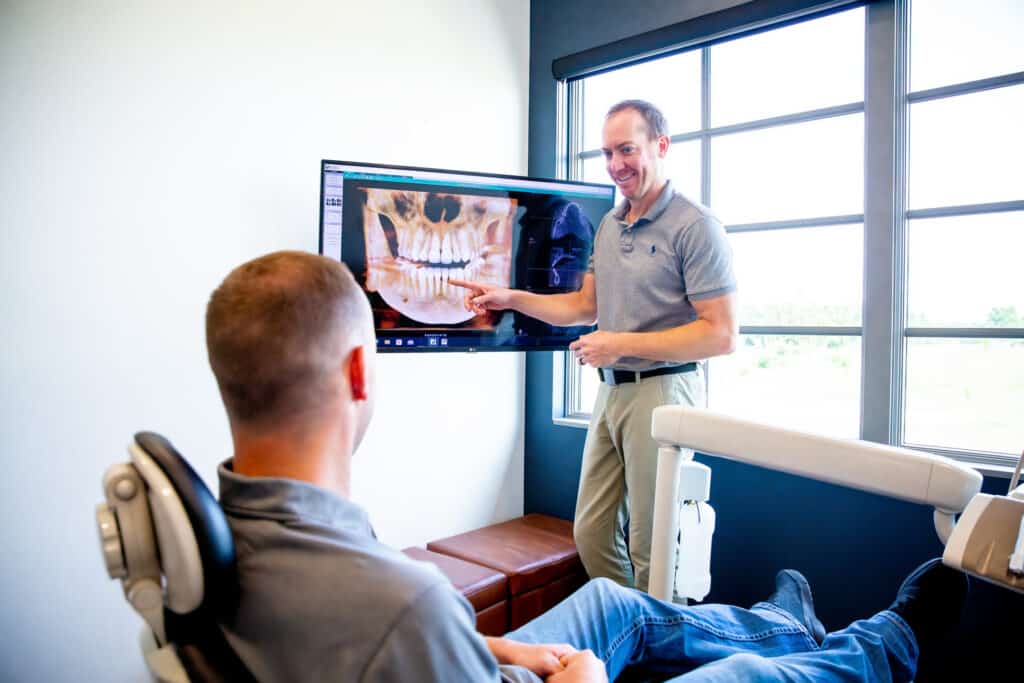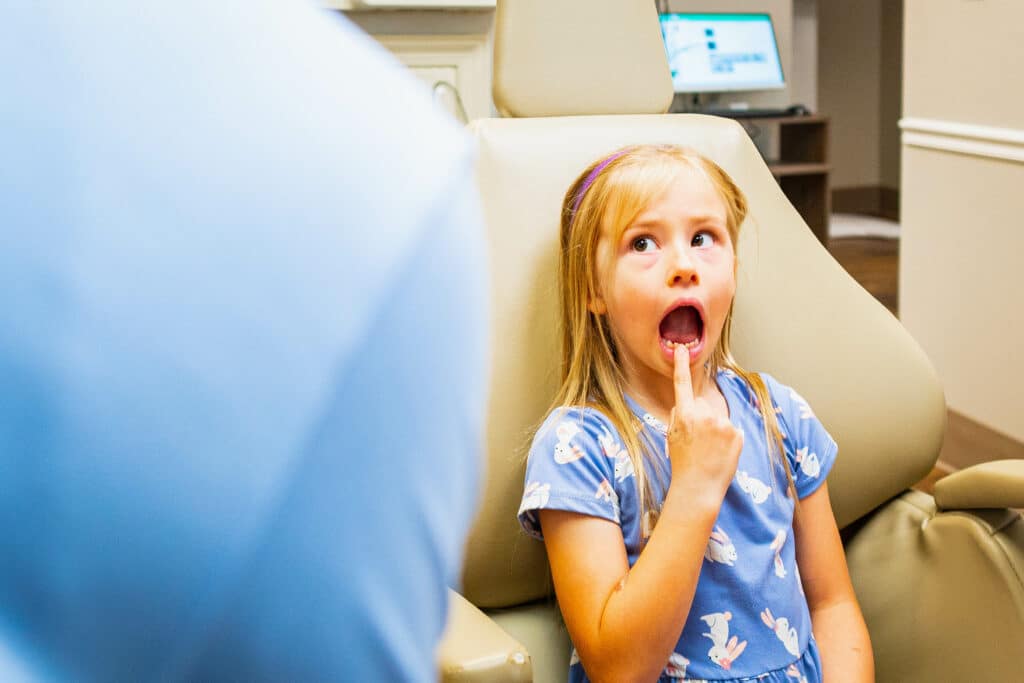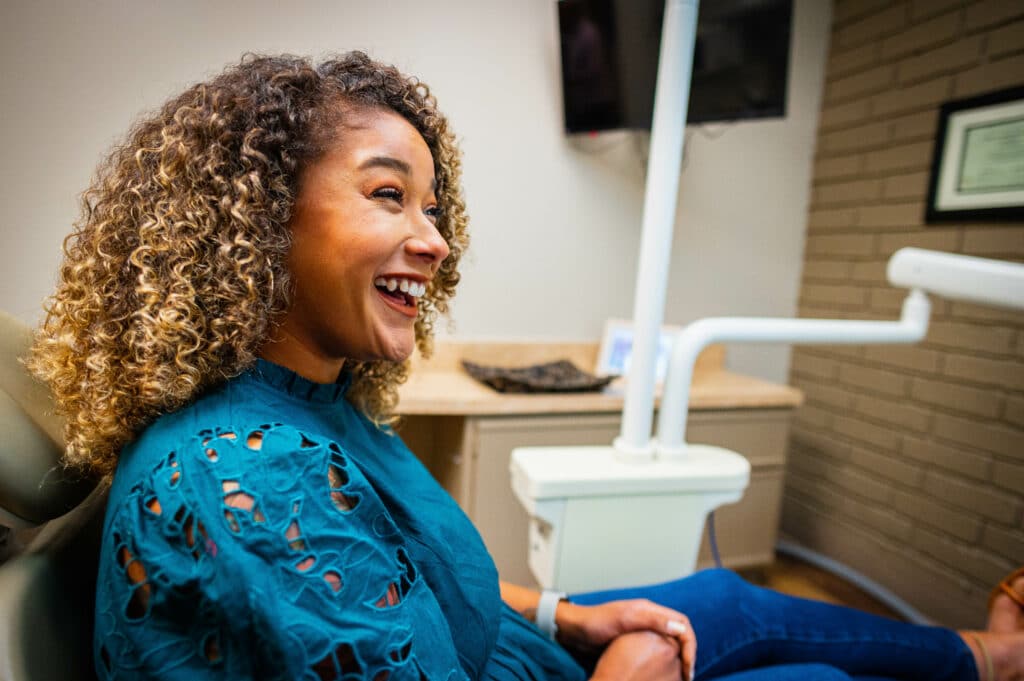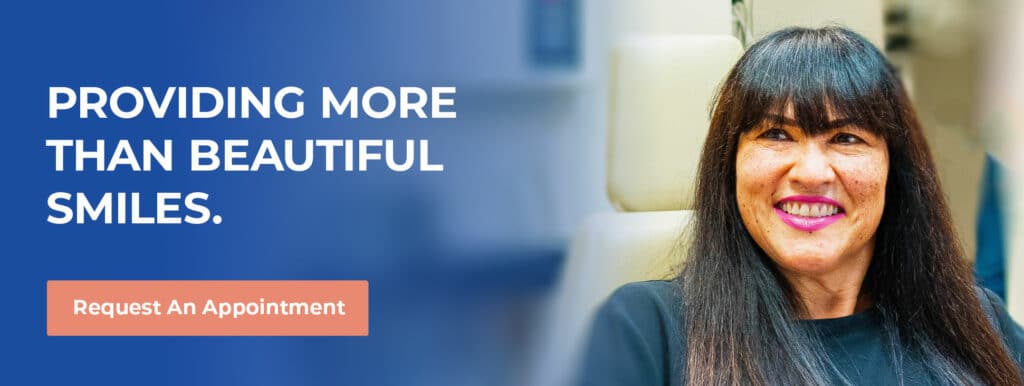Some patients who come for braces treatment learn they need other treatment first because they thrust their tongues against their teeth or have breathing problems.
If not addressed first, braces treatment won’t be as effective to fix those crooked teeth. Often, the reasons behind crooked teeth are OMDs. What does ‘OMDs’ mean? Orofacial myofunctional disorders.
What are OMDs, and how do you fix them? At Endicott Dental, we can help repair your OMDs through dental and orthodontic treatment and treat you through myofunctional therapies. We know what you’re wondering — what are myofunctional therapies? We have the answer!
What Are OMDs?
Your mouth is a fantastic design. The teeth, lips, cheeks, and tongue are all made to work together to eat, produce words, allow you to breathe correctly, and even whistle! But what happens if something affects that design? That’s what OMDs can do; the result can be anything from breathing issues to speech problems.
OMDs are related to your tongue. At rest, your tongue is designed to fit against the roof of your mouth, away from the back of your upper teeth, while your teeth sit slightly parted. If your tongue sits against your teeth or at the bottom of your mouth, it could indicate an OMD.
Some examples of OMDs include:
- Tongue thrusting
- Thumb-sucking
- Mouth breathing
- Mouth resting with lips apart
- Tongue resting between or against the teeth
- Speech issues

What Can OMDs Do?
How can a tongue thrust cause problems? Is breathing through the mouth instead of the nose an issue? Does it matter where my tongue rests in my mouth?
These disorders can cause a range of problems no matter what your age. However, the older you get, the worse the problems they can cause.
What are some of the problems OMDs can cause?
- Overbite, underbite, open bite in teeth
- Problems chewing
- Problems with swallowing patterns
- Restricted tongue movement
- Breathing difficulties through the nose
- Speech problems, mainly sh, ch, s, or j sounds
- Problems closing lips while swallowing
These problems can worsen over time, so addressing OMDs as soon as possible is important.
How Does Myofunctional Therapy Help?
Myofunctional therapy, sometimes called orofacial myofunctional therapy (OMT), is a series of physical therapy exercises. These can include tongue thrusting exercises, speech improvement exercises, and exercises for sleep apnea. Most exercises can be done at home and involve some simple tasks. The idea of these exercises is to retrain the tongue and mouth so they sit in the correct positions at rest.
Let’s take a common OMD as an example: tongue thrust. What is tongue thrust? It’s when you consciously or unconsciously push your tongue against the back of your teeth, usually the upper front teeth.
The tongue thrust reflex can cause an overbite, underbite, or deep bite left unchecked. It can also cause speech problems.
Tongue Thrust Exercises
How do you stop a tongue-thrusting habit? Myofunctional therapy can help! Here are some examples of tongue-thrust exercises therapists use to stop tongue thrust.
- Tongue Clicks - placing the tip of the tongue behind the incisors on the roof of your mouth and pulling down, making a clicking sound. This exercise is usually done about 20 times.
- Tongue Spotting - placing the tongue on the spot behind the incisors and holding it there for 10 seconds. This is repeated ten times.
- Tongue Retraction - touching the back of the palate with the tip of the tongue and holding it for at least 3 seconds. This is done five times in a row.
- Spoon Push - placing a spoon or other hard object against the lower lip and pushing the tongue against it. This is done ten times.
These are just a few myofunctional therapy exercises that end the OMD of tongue thrusting. If they are unsuccessful, your dentist or orthodontist can place a tongue crib in your mouth.
This device hooks on the back molars and has a small wire “basket” in the front to hold the tip of the tongue away from the back of the teeth and against the palate. This device trains the tongue to sit correctly in the mouth. It is often worn for about six months at a time.
Other tongue exercises can help reduce sleep apnea by teaching the tongue not to fall back in the throat, blocking it off. It’s also important to breathe through your nose because it’s designed to filter air better than through your mouth. Mouth breathing dries out your mouth, encouraging bacteria growth and tooth decay. Myofunctional therapies can improve these issues as well!

Invisalign or Braces Treatment for OMDs
While myofunctional therapy for OMD is more common, some patients need stronger treatment. They also might need to repair their teeth after an OMD has damaged them. Endicott Dental offers braces treatment and Invisalign treatment to correct OMD dental issues.
We recommend correcting the OMD first. Otherwise, the problem will surface again once your braces or Invisalign comes off. We can help you end the bad habit that has damaged your teeth. When you’re ready, we can provide orthodontic treatment to repair those teeth!
Braces and Invisalign
We’ve said that OMDs often cause overbites, underbites, or deep bites, but they can also cause crooked teeth, gap teeth, and even crossbites. Braces treatment and Invisalign can repair these.
Which treatment is right for you? Endicott Dental can recommend the best treatment after a thorough examination. There are pros and cons to each treatment.
Can you wear your Invisalign 22 hours a day as prescribed? If not, you might prefer to wear braces. Do you want your teeth straightened without people noticing? If so, Invisalign may be your treatment of choice.
Whichever method you choose, Endicott Dental can restore your smile after myofunctional therapy!

Myofunctional Therapy Near Me in Broken Arrow, OK
If untreated, orofacial myofunctional disorders can cause eating, speaking, and breathing problems. The sooner we begin treatment, the less damage they can do. Schedule an appointment with Endicott Dental in Broken Arrow, OK, for OMD evaluation.
We will let you know the best course of treatment and whether you will need orthodontic treatment afterward. Let us help you improve your oral health!


